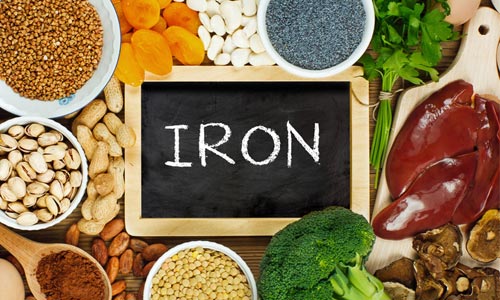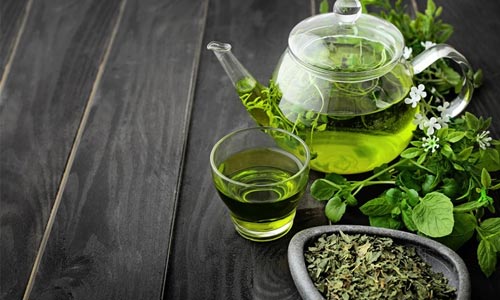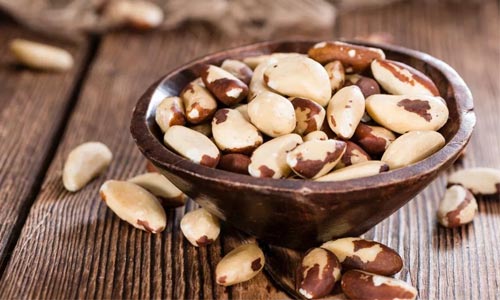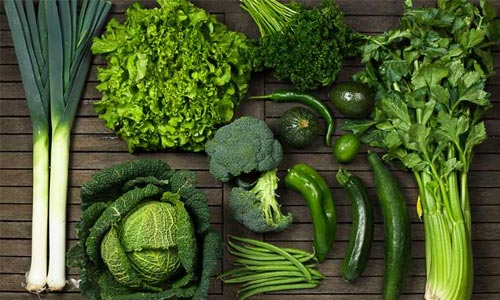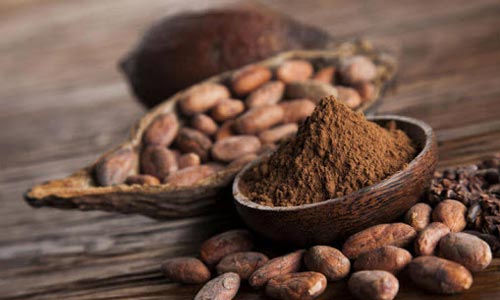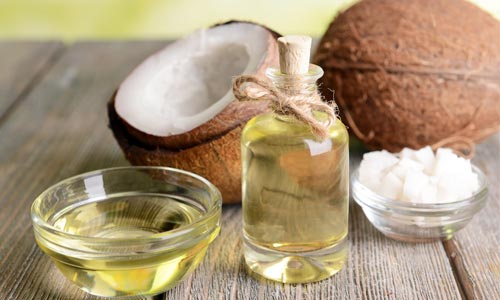Table of Contents
You may have come across these advertisements. Foods to boost metabolism! Or foods to burn fat and stay slim. Well, what are they? In medical terms, they are foods with a high thermic effect. A grapefruit for breakfast boosts metabolism? Is it so? The process doesn’t work like that. Food in itself cannot do so. They cannot store or burn fat in any way on their own.
Foods fall into two categories. Some may be good, whereas others may be bad. Certain healthy foods help to keep you fuller. They are conducive enough. Thus, it helps in overall fat loss in the long term.
Consequently, it aids in calorie burn. However, it is not so that food directly burns fat. It is thus crucial to get rid of these misconceptions.
Imagine if foods could directly burn fat. Everyone would be killing the fat loss game. Let’s give you good news. Certain thermogenic foods do aid in good weight loss. It increases your metabolic rate. Hence, the body burns more stored fat. This is the thermic effect of food.
Thermic Effect Of Food
The thermic effect of food is popular as TEF. Technically, it is dietary-induced thermogenesis. Besides, the process is dynamic. In simple terms, the energy required to process and digest food.
Only some foods are high in thermic effect. Every food won’t give you similar results. It is the magnitude of energy expended. This depends on the healthy foods you consume. Fat has the lowest thermic effect. It appears to be so with 0%-3% of energy consumption. Carbohydrates have a slightly higher thermic effect than fats.
Carbs require about 5%-10% of energy consumption. Protein is ranked highest in this category. It requires about 30% energy consumption to show the desired effects. This gives a 1:1:1 ratio. This factor decides if a food delivers diet-induced thermogenesis. Some foods help in lipolysis. It is a term for fat breakdown. Whereas other foods don’t.
Insulin
Insulin is worth mentioning. It is a hormone that is released from the body. This carries glucose into blood cells. This provides the desired energy that the body needs. Alongside, it helps to control blood sugar levels. Insulin is pretty to judge. It also acts as a hormone for fat storage. One can say insulin to have a dual role.
Certain foods will crank up insulin levels. Insulin inhibits the process of lipolysis. Naturally, these foods will cause the storage of more fat. However, one does not gain weight through insulin. It happens only when you are overeating. Well, everything has its pros and cons.
First, the body uses food for energy. However, the quantity may be too much at times. Only then they get stored in fat chambers of insulin. TEF helps in the effort of loss. It boosts metabolism. But the effects are pretty much negligible.
Influencers of the thermic effect of food
Many people believe in a myth. All people digest using the same amount of energy. However, that is not true. Here are six factors that influence the thermic effect of food.
The first factor that needs a mention is age. The thermic effect of food usually decreases with age. It happens because of changes in digestive capabilities. Besides, sympathetic activity decreases. Overall, TEF decreases with age.
The second factor is physical activity. TEF influence the expenditure of energy. Whether physical energy decreases or increases, TEF is still controversial. Some researchers believe TEF can be altered. It can be done on trained individuals. This happens because of the cofounding effects of body composition. Other factors aiding the process are insulin resistance and physical fitness.
The third most important factor is the meal size. A person may intake higher amounts of food than usual. This would require more significant energy expenditure. Energy expended must be more than 10%. The fourth influence is meal composition. A standard plate of a healthy meal must include carbs, fats, and protein. However, every food must be eaten in moderation.
Measure using your palm. One must have a palm-size of carbohydrates. One full fist of green fibrous vegetables is essential. The palm is connecting to the thumb must be the protein portion. The rest can be fat. All these factors will create a well-balanced meal.
The next important factor is meal timing. Space out small portions of meals throughout the day. Eat often. Eating frequently will keep you fuller for longer. This will aid in the reduction of portion size. Most importantly, this will help more in weight loss. Hence smaller frequent meals are considered over large meals.
Now you know the technicalities behind fat burning. Let’s get an idea of the foods that boosts metabolism. Note, all these foods aid in the process of high thermic effect. Some foods with high thermic impact directly or indirectly boost metabolism.
What Foods Have a High Thermic Effect to Boost Metabolism?
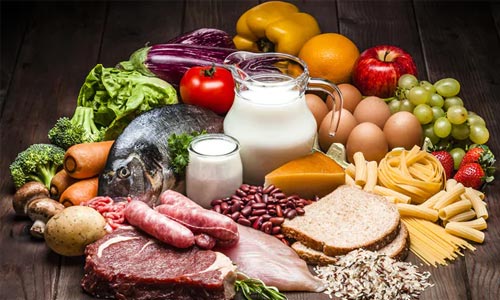
1. Foods rich in Protein content
Fish, dairy, nuts, legumes, and pulses provide an instant metabolism boost. Nuts and seeds also come in handy. They aid in metabolism by requiring the body to digest using more energy. This is the thermic effect of food. TEF refers to the calories burnt when the body processes, absorbs or digests food nutrients.
Protein-rich foods tend to increase the most TEF among food categories. The metabolic rates increase by 15%-30%. Compared to fats and carbs, protein requires more energy expenditure. Hence, all weight loss plans prefer a high protein diet.
Protein diets also aid in metabolism hold. Metabolism tends to drop when losing weight. Protein prevents it from happening. Instead, it helps to hold on to the muscle mass. Protein intake keeps you fuller. Hence, overeating can be reduced in the process.
2. Foods rich in iron, selenium, and zinc
All three elements play equally crucial roles in boosting metabolism. Alongside, it leads to the proper functioning of the body. Generally, the thyroid gland regulates metabolism. Iron, zinc, and selenium are required for the appropriate functioning of thyroid glands. They regulate this gland. Most importantly, they reduce their ability to produce hormones in ample amounts.
Include iron and zinc-rich foods in your diet, such as meat, shellfish, legumes, nuts, seeds, and whole grains. Include selenium-rich foods like seafood and organ meats.
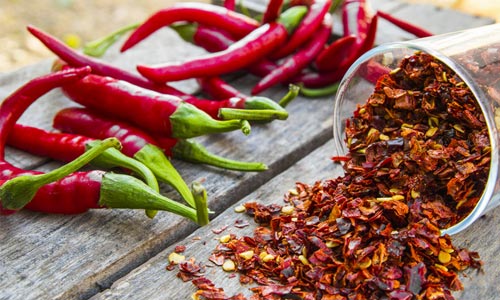
3. Chilli Peppers
Chilli peppers have a chemical in them called capsaicin. This boosts metabolism. It does so by burning fat and calories. Spicy foods have a lot of fresh and dried peppers. A study was conducted in 2015. It revealed capsaicin to provide a modest metabolism boost.
Having chili peppers can burn up to 50 calories per day. Initial reports noted 130-150mg of capsaicin to give the desired results. Later on, researches showed 9-10mg of capsaicin produced similar results. To get better results, consume it daily. It is recommended that spicy lovers opt fr this. Non-spicy lovers can skip on this option.
Capsaicin has appetite-reduction properties. A recent study proved it. Have 2mg of capsaicin right before a meal. This will curb down your hunger. Hence you will end up eating a smaller portion of food.
Some other properties of capsaicin are worth mentioning. Capsaicin helps to reduce inflammation and pain. It even acts as an anticancer agent. Alongside, it offers anti-oxide benefits in the long run. Some researches indicate its services in treating some diseases. It treats Alzheimer’s disease and rheumatoid arthritis.
4. Ginger
Ginger is one acceptable age-old remedy. It has been in the medical market for decades. Add ginger to your meal. It will aid in increasing the metabolic rate. Alongside, it helps to increase body temperature. Next, it helps in curbing appetite.
Research studies have shown positive effects of ginger on a diet. A 2018 study was conducted on overweight people. Ginger consumption aided in weight loss. Alongside, it benefits the metabolic profile of overweight people. The spice in ginger helps to reduce body weight. It also reduces fasting glucose levels. Along it increases high-density lipoprotein. This is also known as good cholesterol.
Ginger is known to have anti-inflammatory properties. This prevents nausea during pregnancy. Alongside it also reduces nausea after chemotherapy.
5. Green Tea
In recent years, green tea has been in the limelight. It received much-needed attention from researchers. Green tea is known to have potential health benefits. Especially, green tea extract or GTE has the most help. It increases fat burning and metabolism. This occurs both during exercise and at rest. However, having green tea may not have similar results as GTE.
In 2013, a small scale study took place on 63 people. These people had type 2 diabetes. Drinking about 4 cups of green tea a day could reduce body weight. Alongside it reduces basal metabolic rate or BMI. The systolic pressure and waist also decrease.
Some potential health benefits of green tea are mentioned next. Green tea is known to have anti-oxidant and anti-inflammatory properties. Next, it has microbial properties. It benefits the heart and oral health.
6. Coffee
Caffeine curbs down hunger. Alongside it boosts metabolism. It is completely fine to sip on coffee if you like it. Caffeine intake stimulates energy expenditure. After that, it boosts metabolism in the body. Thus, be mindful when consuming coffee.
One may want to opt for decaffeinated coffee. Honestly, it does not have the same effects as caffeinated coffee. Have regular coffee without any addition. Adding cream or sugar increases calorie content. This will start acting against the beneficial effects of caffeine.
7. Brazil Nuts
One of the richest sources of selenium is brazil nut. This mineral is crucial for proper immune function. Alongside, it aids in reproduction. Brazil nuts contain lots of protein and healthy fats. This helps to keep you fuller for longer. Just like zinc and iron, selenium is essential for the thyroid gland. It regulates and boosts metabolism. Alongside, it produces vital hormones.
The National Institute of Health (NIH) noted the following. Brazil nuts have 60-90 mg of selenium in them. This is within the dietary range of allowance per day. RDA says not to have more than 55 mg per day.
Even so, one must avoid heavy snacking on brazil nuts since it may cause selenium toxicity. The upper limit of selenium intake a day is 400 mg. This is as per the National Institute of Health guidelines. It improves cholesterol levels in healthy beings. Now one may have abnormal levels of cholesterol. This will act as an indicator of metabolic syndrome.
8. Broccoli
Broccoli contains glucoraphanin. This chemical retunes the metabolic process. It lowers blood fat levels. This also reduces the risk of many age-related diseases. Broccoli is essentially a cruciferous vegetable.
Such veggies, along with broccoli, slow down several cancerous forms. Especially Beneforte broccoli helps in metabolism enhancement. This is because it has high levels of glucoraphanin.
9. Dark green vegetables
Some well known green leafy vegetables are spinach and kale. These vegetables are dark and rich in iron. Hence, it helps to boost metabolism. Iron is crucial for growth, metabolism, and development. It was known that only animal products could provide the iron content.
Today, non-heme green veggies are rich sources of iron compounds. Try to pair them with foods rich in Vitamin C. For instance, lemon, citrus, winter squash, and tomatoes. This will allow better absorption of the iron components. Other known minerals in green vegetables are magnesium. It promotes good metabolic function. Alongside, it plays a vital role in 300 body processes.
10. Tea
Along with coffee, tea also boosts metabolism. Tea contains catechins along with caffeine. Particularly, oolong tea and green tea shows desired results. It increases your metabolic ability by 4%-10%. This can be a great addition to fat burning. It is equivalent to burning about 100 calories a day.
Oolong and green tea help your body in other ways. It allows the body to use the stored fat effectively. This, in turn, increases the ability to burn fat by 17%. However, the effects may vary from one person to another.
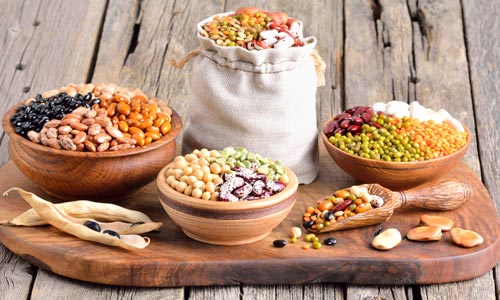
11. Legumes and Pulses
Beans, peanuts, chickpeas, pulses, grams are some common legumes. In particular, they have high protein content. It is so compared to other plant foods. The higher the protein content, the more energy is expended. Consequently, more calories will be burnt every time. This takes longer to digest as well. Hence protein-rich legumes are recommended.
Pulses have a good amount of dietary fiber in them. They include soluble fiber and resistant starch. They become rich food sources for good bacteria. Hence the bacteria in the small intestine remain healthy and living for a long time.
This good bacteria, in turn, produces short-chain fatty acids. This helps the body to use up the stored fat. It is usually used in energy form. Thus, this maintains normal blood sugar levels. A study was conducted recently. The participants were on a legume-rich diet. It lasted for eight weeks.
The results showed beneficial changes in metabolic rate. They lost 1.5 times the weight of the average control group. Did you know legumes, too, could be rich in amino acids? Yes, legumes are rich in arginine. It is an amino acid to burns fat and carbs. This, in turn, helps in more energy expenditure.
Some other legumes contain another amino acid. It is glutamine. This is high in sources like fava beans, peas, and lentils. This helps to burn more calories during digestion.
12. Spices That Boost Metabolism
Some spices are known for their metabolism-boosting benefits. Ginger is one of them. Dissolve two grams of ginger powder in hot water. Drink this on an empty stomach. It will fasten your metabolic rate throughout the day. You may even sip on it during a meal. Thereby burn up to 43 calories per intake.
However, the results may vary depending on the water retained. It also depends on what food you eat. Some food takes longer to digest than others. Hence the number of calories burnt may vary. This is a better alternative to simple hot water. Drinking warm ginger water can satiate hunger. Thereby you end up eating smaller portions all day.
The next spice is the grain of paradise. It comes in the family of ginger. A study showed positive results. Half of the participants were given 4mg of this spice. At the same time, the other half received a placebo. In the next 2 hours, the former group burned more calories than the latter group. Hence this spice tops the list of a metabolic boost after ginger.
However, non-responders were also present in the study. This indicated that results might vary from one individual to another. The next spice of choice is cayenne pepper. Like chili pepper, this, too, burns fat at a faster rate. The results were positive, especially after a high-fat meal. However, people who hate spice may omit this spice.
13. Cacao
Cacao can be found in tasty treats: it, too, aids in boosting metabolic rate. However, most of them are sugary. For best results, opt for treats with 90% cacao and above. Some studies on mice were conducted. It indicted cacao, and cacao extracts promote gene expression. That, in turn, stimulates the fat stored for energy expenditure. This was true for mice on high fat or calorie diet.
Cocoa even prevents enzyme actions. These actions are necessary to breakdown fat and carbs during the digestion process. Theoretically, it prevents weight gain in humans. It does so by absorption of added calories. However, human studies on the effects of cacao cocoa are rare. Opt for raw cacao to obtain the most benefits.
14. Apple Cider Vinegar
It does increase metabolism. Several studies prove this point. The fat burned in energy form increases post vinegar consumption. Studies on mice have been done. Some of them were given vinegar. Post consumption, AMPK enzyme production increased. This, in turn, reduced fat storage. Alongside, the fat burnt increased.
Obese rats were also studied. They were treated with vinegar. The results were desirable enough. It reduces the fattiness around the liver. Alongside, belly fat burns at a faster rate. Apple cider vinegar slows down stomach emptying. The feelings of fullness enhancing.
Four teaspoons of apple cider vinegar equal 20 ml of vinegar. This amount was found to burn around 270 calories of fat.
15. Coconut Oil
Well, coconut oil has gained popularity over the decades. Coconut oil is rich in medium-chain triglycerides. It is popularly called MCTs. This is contrary to most fats. Other fats are usually long-chain fatty acids.
Unlike the latter, MCTs are absorbed better. They directly enter the liver. After that, they turn into energy forms. Regular intake of coconut oil must not be more than 30ml. This can help to reduce waist size in obese individuals.
16. Water
Drink enough water to stay hydrated. This will also aid in fat loss in the long run. Drinking water even boosts metabolism. The metabolic boost can range from 24%-30%. The 40% increase in growth due to additional calories. It is necessary to heat the water to body temperature. The effect may usually last for an hour. However, individual differences may persist throughout.
17. Seaweed
Seaweed is rich in iodine. This hormone is necessary for thyroid hormone production. Alongside, it aids in protecting the thyroid glands. Iodine performs several functions. One of the most crucial function is regulating metabolic rate. Regular consumption of seaweed helps to boost metabolism. After that, the iodine levels are met.
On average, 150mcg of iodine intake is recommended. This amount equals several seaweed servings a week. However, do not consume in excess. Seaweed, like kelp, is iodine-rich. Too much consumption can cause iodine-toxicity. Hence have seaweed in moderation.
Seaweed has another mineral-rich compound. It is fucoxanthin. This, too, boosts metabolism. Usually, brown seaweeds have this compound. It has anti-obesity effects. This helps to burn more fats than average.
Measuring Thermic Effect Of Food or TEF
Under controlled conditions, TEF can be measured. There is a gold standard for measuring TEF. Calories compared in fed is compared with that in fasting state. Recently, new methods are under study. One of them being a metabolic chamber. This considers energy expenditure post-physical activity. A more specific period is after eating.
However, this is not a reliable method. This method does not go well for home-cooked meals. Some foods are high in TEF. One is prone to miscalculation outside lab conditions.
Negative Calorie Foods
Have you ever heard of harmful calorie foods? Many people tend to confuse this with TEF. Certain vegetables are rich in fiber and water. For instance, cucumber, celery, or lettuce. These appear to burn more calories during digestion. This is so compared to reality. The theory indicates a prime loss. It shows a net loss of calories by eating these foods.
Hence, harmful calorie foods don’t exist. One can opt for low-calorie foods—this helps in maintaining a healthy weight. However, one cannot wholly rely on TEF. The TEF is not sustainable in the long run.
The beginning of the article mentions about thermic effect of food. However, did you know non-activity energy thermogenesis(NEAT) existed? Little movements can also add up to the calories burnt. For instance, she was fidgeting. This is called NEAT. Alongside two other factors exist. One is the basal metabolic rate(BMR). The other prime factor is the thermic effect of exercise. A combination of these factors shows total energy expenditure.
Total Energy Expenditure
Burn calories while you eat. Sound pretty appealing. Well, it is true. One can burn calories while eating everything they want. An important point is the TEF. The magnitude of TEF must be kept in mind. Weight management of a person relies on the following.
It includes the food we eat daily. The portion size and food composition must be kept in mind. Next, one must note their level of activity. Don’t try to focus too much on the TEF of different foods. Instead, focus on foods that fuel your body. This positive mindset will help to create a healthier lifestyle.
The daily level of activity has two subcategories. One is a structured activity. Whereas the other is the unstructured level of activity. This majorly influences calorie use. Here is a breakdown of the total energy expended daily. The basal metabolic rate or BMR is 60%. Intentional exercise is about 10%. TEF is 10%. At the same time, the NEAT is 20%.
One cannot do much about the BMR. So, let’s focus on activity-related energy expended. This will include intentional exercise and NEAT. Use a pedometer. It will help to track daily step counts. One can switch for stairs instead of an elevator. Add all such little steps for a healthier lifestyle.
Concluding
This article provides an idea of metabolic boost. Alongside it covers the foods that induce metabolism. Do not try to focus on hard food with a high thermic effect. Try to indulge in healthier food choices. Limit your snacking. Drink enough water to stay hydrated. Sleep enough to regain energy levels.
Carry out daily activities. It can simple cardio. For instance, cycling, running or swimming. Or focus on strength training. This, too, can be beneficial in losing weight. Metabolic boost is vital for calorie and fat burn. Make sure to be active enough. Only then will you meet the desired health goals.


